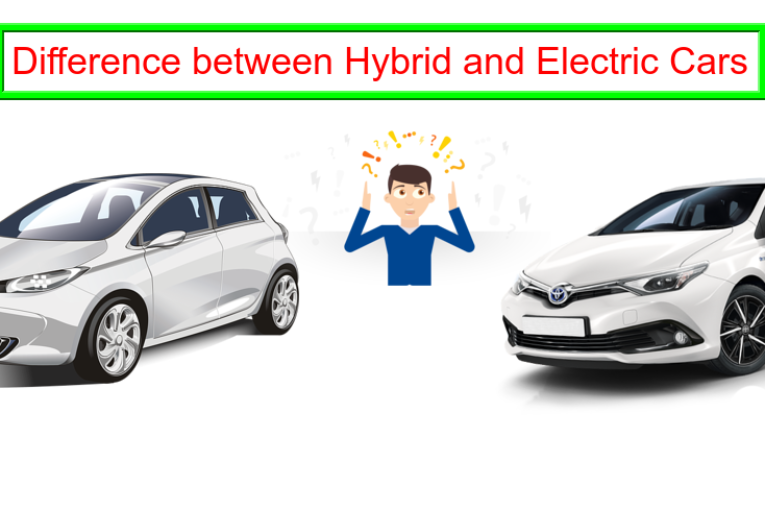
With ever-growing changes in technology in the futuristic world today, major upgrades have been made to conventional vehicles. Starting with a self propelled car in 1769 that maxed out at 2.5 MPH, we now have cars that go up to 270 MPH. Hybrid and electric cars creating a huge buzz in the automobile industry.
Changes are constantly being made to keep up with the current advancements in technology. The first mass-produced Hybrid is the TOYOTA PRIUS launched in 1997 whereas Electric Cars were invented post 1850’s. They came into commercial use in 1897 in the U.S. With hybrids having features similar to electric cars, confusion may arise about the differences between the two types of vehicles.
Difference between Hybrid and Electric Cars
Power Source:
The major difference in Hybrid Cars and Electric Cars lies in the name itself. Electric Cars run entirely on electricity whereas Hybrid Cars use a mixture of gas and electricity. Any car that uses two sources of power is a hybrid.
The whole concept of hybrids is to save on fuel. It uses a gasoline engine that is combined with power from an electric motor. And hence it’s called a hybrid, i.e. a combination of both. The batteries in hybrids not only provide energy but also store it. The primary source of power is the internal combustion engine with a battery of electric cells and a hub mounted DC motor that supplies supplementary propulsion.

Hybrids Cars: Low Emission Vehicles (LEV)
While electric cars limit your driving range due to the battery capacity, a hybrid enables you to drive more distance using lesser fuel. Hybrids are Low Emission Vehicles (LEV). They are more eco-friendly than conventional vehicles as they reduce the use of gas required to run the car, reducing the amount of pollution. The batteries on these cars get recharged when the engine is used to drive as the conventional engine provides the extra power when needed like an extra battery pack. However, hybrids are built for economy.
Maintenance of Hybrid Cars:
The total output and acceleration falls behind gas only, conventional vehicles. They are more expensive than electric or traditional cars and cost a lot more to maintain. In cases of breakdown, the maintenance and upkeep of the car becomes cumbersome as they cost a lot to maintain and not all mechanics are equipped with the knowledge or have the tools to fix them properly. One of the acknowledged leaders in Hybrid cars is TOYOTA.
Electric Cars: Zero Emission Vehicles (ZEV)
An Electric Car relies on its battery alone for power. They are ecologically perfect and are classified as Zero Emission Vehicles (ZEV). They also help the environment by making no noise at all and are easier on the environment as they use no fuel and rely 100% on the use of electric power stored in the battery. And since they run on electricity, they are cheaper to maintain as electricity is cheaper than gasoline. Oil changes or any other maintenance that a conventional car needs are not required.
Maintenance of Electric Cars:
Despite the financial and environmental benefits, Electric Cars have their downsides too. The batteries cannot be charged unless plugged into an energy source. They run shorter than hybrid cars and recharging them takes a considerable amount of time. Some take a staggering 15-20 hours to charge fully. The availability of charging stations is inconsistent. Not all rest stops and gas stations are equipped with electric car chargers often causing major trouble for the owner on long drives.
Even with the growing popularity with Electric Vehicles, there are considerably fewer choices than hybrid or conventional cars. The leading brand for Electric Cars is currently TESLA.







